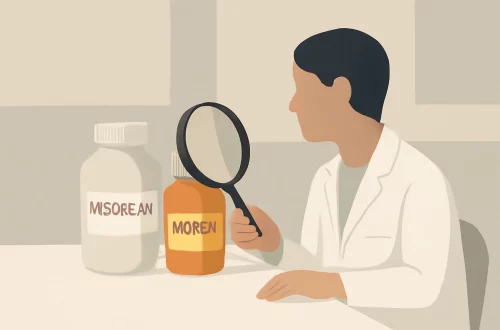
Understanding the Canine Dental Chart for Better Pet Care
Understanding your dog’s dental health is crucial for their overall well-being. Just like humans, dogs require regular dental care to maintain their oral hygiene and prevent various health issues. Dental problems in canines can lead to painful conditions that affect their ability to eat, play, and enjoy life. Moreover, poor dental health can have far-reaching effects on a dog’s general health, potentially leading to systemic diseases that can affect the heart, kidneys, and other organs.
Many pet owners overlook the importance of dental care, often unaware of the potential risks associated with neglecting their dog’s teeth and gums. Regular veterinary check-ups and proper dental hygiene practices at home can significantly improve your furry friend’s quality of life. This includes understanding the canine dental chart, which serves as a helpful guide for identifying dental issues and assessing your dog’s oral health.
By paying attention to your dog’s teeth, you can catch potential problems early and take the necessary steps to address them. With the right knowledge and tools, you can ensure that your canine companion enjoys a long, healthy life with a bright smile. Whether you’re a new pet owner or have had dogs for years, understanding the canine dental chart can empower you to take proactive steps in your dog’s dental care.
The Importance of Regular Dental Check-ups
Regular dental check-ups are essential for your dog’s health. These routine visits allow veterinarians to assess your dog’s oral condition, identify any existing issues, and provide preventative care. Just like humans, dogs may develop plaque and tartar buildup, which can lead to gum disease if not addressed.
During a dental check-up, your vet will examine your dog’s teeth and gums, looking for signs of decay, infection, or other dental problems. They may also perform a professional cleaning to remove plaque and tartar that regular brushing cannot eliminate. This not only helps to maintain your dog’s dental health but also prevents more severe health issues down the line.
Moreover, regular check-ups can help in identifying problems early. For instance, periodontal disease, which affects the gums and surrounding tissues, can be asymptomatic in its early stages. If left untreated, it can lead to tooth loss and other serious health complications. Your veterinarian will use the canine dental chart to document any findings and track changes over time, ensuring that your dog receives the best care possible.
In addition to professional check-ups, pet owners should also be proactive in their dog’s dental care at home. This includes regular brushing, providing dental chews, and monitoring your dog’s oral health. By combining home care with veterinary check-ups, you can significantly improve your dog’s dental health and prevent potential issues.
Understanding the Canine Dental Chart
The canine dental chart is a visual representation of a dog’s teeth, designed to help pet owners and veterinarians assess dental health. It typically includes a diagram of the dog’s mouth, labeling each tooth and providing information about its location and function. Understanding this chart can be an invaluable tool in monitoring your dog’s dental health.
Dogs have a total of 42 teeth, which are categorized into four types: incisors, canines, premolars, and molars. Each type plays a specific role in your dog’s ability to eat and function. The incisors are used for nibbling and grooming, while the canines are crucial for gripping and tearing food. Premolars and molars are responsible for grinding and crushing food, making them vital for proper digestion.
The dental chart also indicates the eruption timeline of a dog’s teeth, which can vary by breed. Puppy teeth begin to emerge around three weeks of age, and by six months, most dogs will have their adult teeth. Understanding this timeline can help you monitor your puppy’s development and identify any potential dental issues early on.
Additionally, the chart can be used to record any dental problems your dog may encounter over time, such as fractures, decay, or periodontal disease. By keeping track of these issues, you and your veterinarian can develop a targeted dental care plan that addresses your dog’s specific needs.
Common Dental Problems in Dogs
Despite the importance of dental care, many dogs suffer from dental problems that can lead to serious health issues. Some of the most common dental problems include periodontal disease, tooth decay, and fractured teeth.
Periodontal disease is the most prevalent dental issue in dogs, affecting a significant percentage of the canine population. It begins with the buildup of plaque, which can harden into tartar if not removed. As tartar accumulates, it causes inflammation of the gums, leading to gingivitis. If left untreated, this condition can progress to periodontal disease, resulting in tooth loss and potential infections that can spread to other parts of the body.
Tooth decay, while less common than in humans, can still occur in dogs. It typically results from a combination of poor dental hygiene and dietary factors. High-sugar diets can contribute to the development of cavities, which can be painful and require veterinary intervention.
Fractured teeth are another issue that can arise, especially in active dogs that enjoy chewing hard objects. A fractured tooth can expose the sensitive pulp inside, leading to pain and infection. In some cases, extraction may be necessary to resolve the issue.
Recognizing the signs of dental problems is crucial for prompt treatment. Symptoms can include bad breath, difficulty eating, swollen gums, and excessive drooling. If you notice any of these signs, it’s essential to consult your veterinarian for an evaluation and appropriate care.
Preventative Measures for Better Dental Health
Preventative dental care is the best way to ensure your dog maintains a healthy mouth and overall well-being. There are several effective strategies that you can implement to support your dog’s dental health.
Regular brushing is one of the most effective ways to prevent dental issues. Aim to brush your dog’s teeth at least two to three times a week, using a toothbrush and toothpaste specifically designed for dogs. This practice helps remove plaque buildup, reducing the risk of gum disease and cavities.
In addition to brushing, consider incorporating dental chews and toys into your dog’s routine. These products are designed to help clean teeth and stimulate gums while your dog chews. Look for products that have the Veterinary Oral Health Council (VOHC) seal of approval, as these have been shown to be effective in reducing plaque and tartar buildup.
Diet also plays a significant role in dental health. Feeding your dog high-quality kibble can help reduce plaque buildup compared to soft food. Additionally, consult your veterinarian about dental diets formulated to improve oral health.
Routine veterinary visits are essential for maintaining your dog’s dental health. During these visits, your vet can perform professional cleanings and monitor your dog’s oral health closely. Early detection of potential issues can save your dog from pain and costly treatments.
By implementing these preventative measures and understanding the canine dental chart, you can significantly improve your dog’s dental health and overall quality of life.
**Disclaimer: This article is for informational purposes only and is not intended as medical advice. Consult your veterinarian for any health concerns regarding your pet.**




